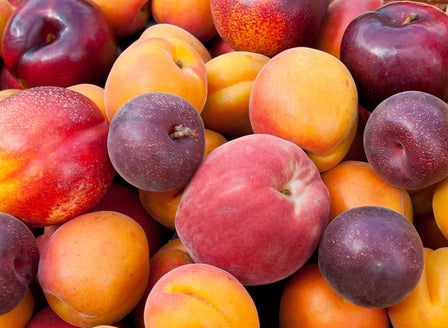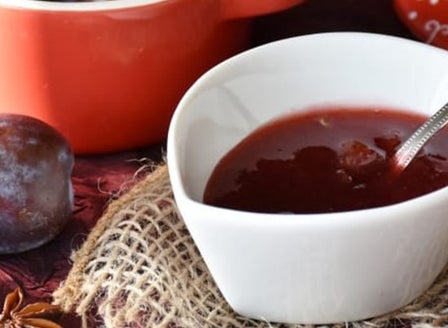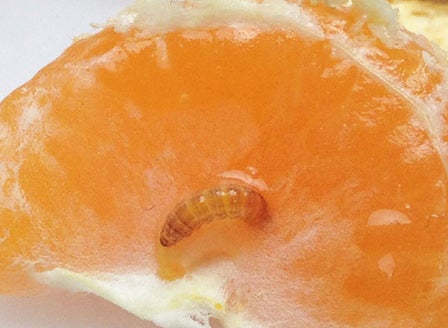What could be better than being able to walk out to your garden and pick your own juicy plums when they are at their freshest and tastiest time. Food tastes better when you've nurtured it and watched it grow to a fully matured plant.
Planting Calendar
Plums should be planted from June through to the end of August. Planting should be done in winter when the trees are fully dormant (when they have completely lost their leaves for the season). This is also the best time of year to buy your fruit trees as this is when we have the greatest selection in store
Harvest In
2 - 4 Years
Plums will be ready to harvest 2 to 4 years after planting. Harvest when fruits give a little when squeezed gently, in late summer.
Prepare
Position
Choose a position that gets full sun, or at least 6 hours of direct sunlight daily, protection from wind is also ideal. Plant at least 4 metres apart from other fruit trees, giving them enough space to mature. Though there are no true dwarf plum varieties in New Zealand, they can be cut back hard to maintain a reasonably small shape once fruiting has finished
Soil
When planted into the ground plums like a free draining soil that is rich in organic matter. To improve the organic content in your soil, break up the soil and add Kings Compost and Kings Sheep Pellets then mix together well. When growing in containers, plant into Kings Container mix. This mix contains added water storage crystals and Saturaid, two products that help maintain moisture in the soil.
Pollination
While some varieties of Plum are self fertile you will get better crops if planted with another variety.
Plant
When planting into the ground, gently tap the plant out of its pot. Dig a hole twice the depth and width of the plants root ball. Mix Kings Compost into your existing soil at a 50/50 ratio, add Sheep Pellets and Kings Citrus & Fruit Tree Fertiliser , then mix together well. Back fill the hole with this soil, so that when planted the top of the plant’s roots sit level with the surrounding ground. Insert a hardwood stake next to the plant, being careful not to damage the roots, and tie the tree to it for support with tree-tie. Firm the soil down gently and water in well with Aquaticus Organic Garden Booster. In heavier clay soils, where drainage is likely to be an issue, plant onto a raised mound and sprinkle Gypsum Clay Breaker into the bottom of the hole, this helps slowly condition the soil and will help to break down the clay.
Care
Watering
Watering is essential especially in the first year of planting to allow the roots to get well established. Water slowly allowing the water to sink down into the roots, rather than allowing it to run off the top of the soils surface. Add Saturaid into the soil at planting as this will help channel the water deep down into the root zone.
Feeding
Liquid feed your fruit tree once every four to six weeks with Organic Garden Booster. In addition, apply Kings Citrus and Fruit Tree Fertiliser in spring and again in autumn.
Protecting
Protect against birds by draping Bird Netting over the tree as the fruit ripens. Protect from Guava Moth from September through till February use Guava Moth traps to monitor the number of moths present. Place the trap halfway up the tree. One trap will be sufficient for 4 trees. Remember to replace the Pheromone every 6 weeks for best results. If there are only small numbers present the trap should be sufficient to control the problem. If you catch more than 12 moths in a 2-week period, spray trees thoroughly with Success Ultra. Spray no more than 4 times in a season.
Mulching
Mulch around the base of the plants (make sure that the mulch does not come into direct contact with the stem of the plant) with Living Earth More than Mulch. Mulching helps to reduce weeds as well as aiding the soil to retain moisture
Spraying
Stone fruit need a regular spray program, used for prevention rather than trying to treat the problem once it is active. At a minimum spray with FreeFlo Copper as per label instructions.
Pruning
Never prune Plums from Late Autumn through to Winter, due to the risk of disease. Prune during dry periods from Spring to Summer to control vigour and to shape. The best time to prune your plum tree is after fruiting, pruning up to a third of the total growth each year. Remove all diseased, damaged and dead wood. Remove any branches that are crossing or rubbing against each other. Remove all water shoots (long growth sprouts that grow straight up vigorously). Remove branches that are growing back into the centre of the tree, creating an open vase shape. Always remove major branches by cutting flush to the trunk. Smaller cuts should be made on an angle about 15mm above an outward facing bud to promote growth away from the centre of the tree. Seal cuts above 15mm in thickness with a pruning paste – available instore.
General Care
When using sprays, chemicals or fertilisers always read the label and follow the instructions. Apply sprays in the evening to avoid harming beneficial insects.
Beginner Tip
For smaller gardens purchase a double grafted tree, This has two different varieties growing on the one trunk.
Expert Tip
Often a large amount of fruit will set from the blossoms. However, letting these all mature poses a risk of small maturing fruit, high humidity levels causing disease, and branch breakage due to heavy crops. To alleviate this problem, thin (remove) immature fruit by up to a half.
Tip
For pest or disease diagnosis contact our online Plant Doctor for advice.
Top Varieties
Luisa
This delectable delight is a must have loaded full of the sweetest juiciest succulent fruit. Fruit has yellow/orange skin with yellow flesh. This plums produce fruit on spurs that are at least one year old. Self fertile but planting with another variety will increase crop size. Fruiting later in the season (Late Jan) Growing to 5 x3m
Duffs Early Jewel
Fruiting early in the season around Christmas this dark red skinned fruit with yellow flesh is a must have. Makes a great pollinator for other varieties. Growing to 5 x 3m
Satsuma
A blood red plum with juicy sweet red flesh. Fruiting mid season (feb) it is a great eaten off the tree used for jam, jellies and bottling.
Frequently Asked Questions
My plums don't fruit but flower very well, what has happened?
This is most probably because they need a pollinator. If you know the variety then we can find another plum to solve the problem. Otherwise, take a look at 'four trees in one hole' on the Waimea nursery website to alleviate the space issue.
How often should I water my plum tree?
Watering is essential especially in the first year of planting to allow the roots to get well established. Water slowly allowing the water to sink down into the roots, rather than allowing it to run off the top of the soils surface. Add Saturaid into the soil at planting as this will help channel the water deep down into the root zone.
Do plum trees need to be pruned?
Never prune Plums from Late Autumn through to Winter, due to the risk of disease. Prune during dry periods from Spring to Summer to control vigour and to shape. The best time to prune your plum tree is after fruiting, pruning up to a third of the total growth each year. Remove all diseased, damaged and dead wood. Remove any branches that are crossing or rubbing against each other. Remove all water shoots (long growth sprouts that grow straight up vigorously). Remove branches that are growing back into the centre of the tree, creating an open vase shape. Always remove major branches by cutting flush to the trunk. Smaller cuts should be made on an angle about 15mm above an outward facing bud to promote growth away from the centre of the tree. Seal cuts above 15mm in thickness with a pruning paste – available instore.
What fertiliser should I use for my plum tree?
Liquid feed your fruit tree once every four to six weeks with Organic Garden Booster. In addition, apply Kings Citrus and Fruit Tree Fertiliser in spring and again in autumn.
How can I prevent pests and diseases on my plum tree?
Regularly inspect your plum tree for signs of pests and diseases. Common issues include aphids, brown rot, and leaf curl. Use organic insecticides, neem oil, and proper sanitation practices to manage these problems. Spray with copper and oil sprays over winter to prevent leaf curl and overwintering insects.


